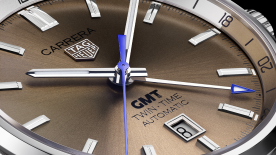There are a number of significant horological celebrations this year, with 50 years of the Zenith El Primero (and therefore the first automatic chronograph movement), 50 years of the TAG Heuer Monaco and – tangentially – 50 years since the first lunar landing, which propelled the Omega Speedmaster to stardom. All of these events have been woven into the famous “storytelling” by these brands in 2019. But there was another milestone in watchmaking in 1969, to put it mildly. It was one that, in a very short space of time, would bring the traditional Swiss mechanical watch industry to its knees.

On 25th December 1969 Seiko presented its Astron quartz movement to the world. The news was no major surprise in itself, since Seiko had been submitting quartz movements to observatory competitions for a number of years. So had a consortium of Swiss brands. What made the difference, however, is that Seiko was ready to fully embrace this new technology, whereas the Swiss watch industry was bogged down with its own traditions.
The Astron brought accuracy to within -5/+5 seconds per month to the world of watchmaking. The significance is hard to overstate, since the chronometer norms at the time were not yet those of the COSC (which was not established until 1973) but of the individual bureaux officiels (official offices) that certified chronometers. The standard at the time required accuracy of -1/+10 seconds per day; from 1973 the COSC required -4/+6 seconds per day. And here was Seiko that could guarantee the same variation, but for an entire month!
With the launch of the Seiko Astron GPS Solar seven years ago, even those impressive figures from 1969 started to look quaint. Thanks to the GPS satellite network, the GPS Solar calibres offer an accuracy of one second in every… 100,000 years! This is hardly something you are likely to notice if you check your watch regularly. But even if you did it wouldn’t matter, because the watch connects to the GPS network twice a day to correct itself automatically.

To celebrate the 50th anniversary of this legendary calibre, Seiko introduces a new movement in the GPS Solar 5X series. The 5X53 Dual Time movement adjusts to a change in time zone at the touch of a button using a high-speed time zone adjustment function that spins the hour, minute and seconds hands to the correct positions independently. The 5X53 can automatically determine 39 recognised time zones and a time transfer function also allows the wearer to switch instantly between local time and home time.

The flagship model in the collection of four watches presented with this new calibre is the limited-edition reference SSH023 in stainless steel with Seiko’s “super hard” black coating and a ceramic bezel. Only 1,500 units of this reference will be available, priced at €2,600 in Europe. The other models will retail for €2,000 and come in stainless steel with a black or dark-blue dial or rose-gold coated steel with black dial and a black rubber strap. They will be available in stores from September 2019.







